Kennedy Space Center Launch Complex 39B
Launch Complex 39B is the second of Launch Complex 39's two launch pads, located at NASA's Kennedy Space Center in Merritt Island, Florida. The pad, along with Launch Complex 39A, were first designed for the Saturn V launch vehicle, which at the time was the United States' most powerful rocket. Typically used to launch NASA's crewed spaceflight missions since the late 1960s, the pad is currently being reconfigured for use by the agency's Space Launch System rocket, a Shuttle-derived launch vehicle which will be used in the Artemis program and subsequent Moon to Mars campaigns. The pad has also been leased for use by NASA to aerospace company Northrup Grumman, for use as a launch site for their Shuttle-derived OmegA launch vehicle, for National Security Space Launch flights and commercial launches.
 Aerial view in June 2019, with Mobile Launcher-1 on the pad for testing | |||||||||||||
| Launch site | Kennedy Space Center | ||||||||||||
|---|---|---|---|---|---|---|---|---|---|---|---|---|---|
| Location | Merritt Island, Florida | ||||||||||||
| Coordinates | 28°37′38″N 80°37′15″W | ||||||||||||
| Operator | NASA | ||||||||||||
| Orbital inclination range | 28–62° | ||||||||||||
| |||||||||||||
Launch Complex 39B's inaugural launch in May 1969 was also that of the only Saturn V to launch from the pad; SA-505, used to launch the Apollo 10 mission. It eventually saw more use as the pad for all three Saturn IB launches of the Skylab program in the 1970s. With the advent of the Space Shuttle program in the early 1980s, pad 39A hosted all Space Shuttle launches until January 1986, when Space Shuttle Challenger would become the first to launch from pad 39B during the ill-fated STS-51-L mission, which would end with the destruction of Challenger and the death of the mission's crew a minute into the flight. The program would restart in October 1988 with the launch of Space Shuttle Discovery from pad 39B during the STS-26 mission, with six subsequent missions launching from pad 39B. It would host 53 Space Shuttle launches until December 2006, when Discovery launched from the pad for the final time during the STS-116 mission; the program's remaining flights would all launch from pad 39A. Launch Complex 39B would subsequently be reconfigured for crewed Ares I launches as part of the Constellation program; the Ares I-X mission launched a prototype Ares I from 39B in October 2009, prior to the program's cancellation the following year. Since then, no launches from pad 39B have occurred.
Launches
List
| No. | Date | Launch vehicle | Serial | Mission | Primary payload | Ref. |
|---|---|---|---|---|---|---|
| 1 | May 18, 1969, 16:49 UTC | Saturn V | SA-505 | Apollo 10 | [1][2][3] | |
| 2 | May 25, 1973, 13:00 UTC | Saturn IB | SA-206 | Skylab 2 | Apollo CSM-116 | |
| 3 | July 28, 1973, 11:10 UTC | Saturn IB | SA-207 | Skylab 3 | Apollo CSM-117 | |
| 4 | November 16, 1973, 14:01 UTC | Saturn IB | SA-208 | Skylab 4 | Apollo CSM-118 | |
| 5 | January 28, 1986, 16:38 UTC | Space Shuttle | OV-099 Challenger | STS-51-L |
|
|
| 6 | September 29, 1988, 15:37 UTC | Space Shuttle | OV-103 Discovery | STS-26 | TDRS-C | |
| 7 | December 2, 1988, 14:30 UTC | Space Shuttle | OV-104 Atlantis | STS-27 | Lacrosse 1 | [4] |
| 8 | March 13, 1989, 14:57 UTC | Space Shuttle | OV-103 Discovery | STS-29 | TDRS-D | |
| 9 | May 4, 1989, 18:46 UTC | Space Shuttle | OV-105 Atlantis | STS-30 | Magellan | |
| 10 | August 8, 1989, 12:37 UTC | Space Shuttle | OV-102 Columbia | STS-28 |
|
|
| 11 | October 18, 1989, 16:53 UTC | Space Shuttle | OV-104 Atlantis | STS-34 | Galileo | |
| 12 | November 22, 1989, 24:23 UTC | Space Shuttle | OV-103 Discovery | STS-33 | USA-48 | |
| 13 | April 24, 1990, 12:33 UTC | Space Shuttle | OV-103 Discovery | STS-31 | Hubble | |
| 14 | October 6, 1990, 11:47 UTC | Space Shuttle | OV-103 Discovery | STS-41 | Ulysses | |
| 15 | December 2, 1990, 06:49 UTC | Space Shuttle | OV-102 Columbia | STS-35 | ASTRO-1 | |
| 16 | April 5, 1991, 14:22 UTC | Space Shuttle | OV-104 Atlantis | STS-37 | Compton | |
| 17 | June 5, 1991, 13:24 UTC | Space Shuttle | OV-102 Columbia | STS-40 | Spacelab LM1 | |
| 18 | May 7, 1992, 23:40 UTC | Space Shuttle | OV-105 Endeavour | STS-49 | Orbus-21S for Intelsat 603 | |
| 19 | July 31, 1992, 13:56 UTC | Space Shuttle | OV-104 Atlantis | STS-46 | ||
| 20 | September 12, 1992, 14:23 UTC | Space Shuttle | OV-105 Endeavour | STS-47 | Spacelab LM2 | |
| 21 | October 22, 1992, 17:09 UTC | Space Shuttle | OV-102 Columbia | STS-52 | LAGEOS II | |
| 22 | January 13, 1993, 13:59 UTC | Space Shuttle | OV-105 Endeavour | STS-54 | TDRS-F | |
| 23 | April 8, 1993, 05:29 UTC | Space Shuttle | OV-103 Discovery | STS-57 | Spacehab SM | |
| 24 | September 12, 1993, 11:45 UTC | Space Shuttle | OV-103 Discovery | STS-51 | ||
| 25 | October 18, 1993, 14:53 UTC | Space Shuttle | OV-102 Columbia | STS-58 | Spacelab LM2 | |
| 26 | December 2, 1993, 09:27 UTC | Space Shuttle | OV-105 Endeavour | STS-61 | Servicing platform for Hubble | |
| 27 | March 4, 1994, 13:53 UTC | Space Shuttle | OV-102 Columbia | STS-62 |
|
|
| 28 | September 9, 1994, 22:22 UTC | Space Shuttle | OV-103 Discovery | STS-64 | SPARTAN-201 | |
| 29 | November 3, 1994, 16:59 UTC | Space Shuttle | OV-104 Atlantis | STS-66 | Spacelab Igloo | |
| 30 | February 3, 1995, 05:22 UTC | Space Shuttle | OV-103 Discovery | STS-63 | Spacehab SM | |
| 31 | July 13, 1995, 13:41 UTC | Space Shuttle | OV-103 Discovery | STS-70 | TDRS-G | |
| 32 | October 20, 1995, 13:53 UTC | Space Shuttle | OV-102 Columbia | STS-73 | Spacelab LM1 | |
| 33 | January 11, 1996, 09:41 UTC | Space Shuttle | OV-105 Endeavour | STS-72 | OAST-Flyer | |
| 34 | February 22, 1996, 20:18 UTC | Space Shuttle | OV-102 Columbia | STS-75 |
|
|
| 35 | March 22, 1996, 08:13 UTC | Space Shuttle | OV-104 Atlantis | STS-76 | Spacehab SM | |
| 36 | May 19, 1996, 10:30 UTC | Space Shuttle | OV-105 Endeavour | STS-77 | Spacehab SM | |
| 37 | June 20, 1996, 14:49 UTC | Space Shuttle | OV-102 Columbia | STS-78 | Spacelab LM2 | |
| 38 | November 19, 1996, 19:55 UTC | Space Shuttle | OV-102 Columbia | STS-80 | Wake Shield Facility | |
| 39 | January 12, 1997, 09:27 UTC | Space Shuttle | OV-104 Atlantis | STS-81 | Spacehab LDM | |
| 40 | November 19, 1997, 19:46 UTC | Space Shuttle | OV-102 Columbia | STS-87 | Spacelab MPESS | |
| 41 | April 17, 1998, 18:19 UTC | Space Shuttle | OV-102 Columbia | STS-90 | Spacelab LM2 | |
| 42 | October 29, 1998, 19:19 UTC | Space Shuttle | OV-103 Discovery | STS-95 | Spacehab SM | |
| 43 | May 27, 1999, 10:49 UTC | Space Shuttle | OV-103 Discovery | STS-96 |
|
|
| 44 | July 23, 1999, 04:31 UTC | Space Shuttle | OV-102 Columbia | STS-93 | Chandra | |
| 45 | December 19, 1999, 24:50 | Space Shuttle | OV-103 Discovery | STS-103 | Servicing platform for Hubble | |
| 46 | September 8, 2000, 12:45 UTC | Space Shuttle | OV-104 Atlantis | STS-106 |
|
|
| 47 | November 30, 2000, 03:06 UTC | Space Shuttle | OV-105 Endeavour | STS-97 | P6 truss | |
| 48 | March 8, 2001, 11:42 UTC | Space Shuttle | OV-105 Endeavour | STS-102 | ||
| 49 | July 12, 2001, 09:03 UTC | Space Shuttle | OV-104 Atlantis | STS-104 | Quest | |
| 50 | December 5, 2001, 22:19 UTC | Space Shuttle | OV-105 Endeavour | STS-108 | MPLM Raffaello | |
| 51 | April 8, 2002, 20:44 UTC | Space Shuttle | OV-104 Atlantis | STS-110 | S0 truss | |
| 52 | October 7, 2002, 19:45 UTC | Space Shuttle | OV-104 Atlantis | STS-112 | S1 truss | |
| 53 | July 26, 2005, 14:39 UTC | Space Shuttle | OV-103 Discovery | STS-114 |
|
|
| 54 | July 4, 2006, 18:37 UTC | Space Shuttle | OV-103 Discovery | STS-121 |
|
|
| 55 | September 9, 2006, 15:14 UTC | Space Shuttle | OV-104 Atlantis | STS-115 | P3/P4 truss | |
| 56 | December 9, 2006, 24:47 UTC | Space Shuttle | OV-103 Discovery | STS-116 |
|
|
| 57 | October 28, 2009, 15:30 UTC | Ares I | none | Ares I-X | ||
| 58 | Q2 2021 | OmegA | unknown | unknown | NationSat | [5][6][7] |
| 59 | November 2021 | SLS Block 1 | unknown | Artemis 1 | Orion 002 | |
| 60 | 2023 | SLS Block 1 | unknown | Artemis 2 | Orion 003 | |
| 61 | 2024 | SLS Block 1B | unknown | Artemis 3 | Orion 004 |
Timeline
References
Sources
- Ward, Jonathan H. (2015). Countdown to a Moon Launch: Preparing Apollo for Its Historic Journey. Greensboro, North Carolina: Springer. doi:10.1007/978-3-319-17792-2. ISBN 978-3-319-17792-2. Retrieved May 20, 2020.
- Bergin, Chris (May 30, 2017). "KSC's historic Pad 39B laying the foundations for hosting big rockets". NASASpaceFlight.com. Archived from the original on May 20, 2020. Retrieved May 20, 2020.
Citations
- Bergin 2017, "The first launch from 39B was Apollo 10 on May 18, 1969. It also was the first real use of the pad’s water deluge system, used to cool the flame deflector in the flame trench after rocket ignition."
- Ward 2015, page 386, "Mission Apollo 10/AS-505; Launch pad LC-39B; Launch time 1969-May-18 16:49:00 UTC; First launch from LC-39B and only Saturn V launch from this pad."
- "Apollo 10: Dress rehearsal for the Moon landing". The Planetary Society. May 2019. Archived from the original on May 20, 2020. Retrieved May 20, 2020.
The mission began on 18 May 1969 with the first and only Saturn V launch from Kennedy Space Center's pad 39B, as preparations were already underway at pad 39A to launch Apollo 11 in 2 months.
- "Lacrosse 1 (NSSDCA/COSPAR ID: 1988-106B)". NASA Space Science Data Coordinated Archive. Archived from the original on May 24, 2020. Retrieved May 24, 2020.
USA 34 [...] Lacrosse 1 was a side-looking radar, all weather surveillance satellite launched from the shuttle mission STS-27 for the US National Reconnaisance Office and the CIA.
- Brinkmann, Paul (April 27, 2020). "Northrop says it's on schedule with next-generation OmegA rocket". United Press International. Archived from the original on May 24, 2020. Retrieved May 24, 2020.
Development of the rocket must continue if Northrop is going to make a spring 2021 launch date for the rocket's first mission. [...] Colorado-based Saturn Satellite Networks selected the OmegA to launch up to two satellites on the rocket's inaugural flight from Kennedy Space Center's Launch Complex 39B, Northrop announced in December.
- Gebhardt, Chris (April 3, 2020). "Northrop Grumman making good progress toward OmegA's first launch". NASASpaceFlight.com. Archived from the original on May 24, 2020. Retrieved May 24, 2020.
These 30 days of activities will involve [...] stacking of the rocket on the mobile launcher inside High Bay 2 of the Vehicle Assembly Building, functional and integrated checkouts of the rocket, and then rollout to launch pad 39B.
- Erwin, Sandra; Foust, Jeff (December 12, 2019). "Saturn Satellite Networks to be first customer of Northrop Grumman's OmegA". SpaceNews. Archived from the original on May 24, 2020. Retrieved May 24, 2020.
Northrop said Saturn will fly one or two of its NationSat small geostationary satellites on an OmegA rocket launching from the Kennedy Space Center’s Launch Complex 39B in the spring of 2021.
External links
| Wikimedia Commons has media related to Kennedy Space Center Launch Complex 39B. |
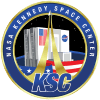
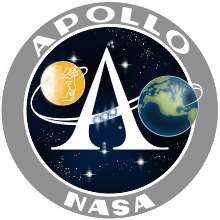
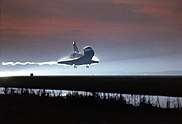

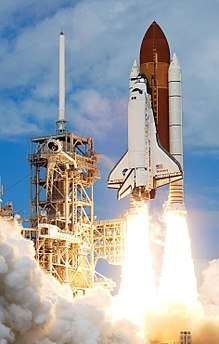
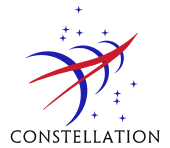
.svg.png)